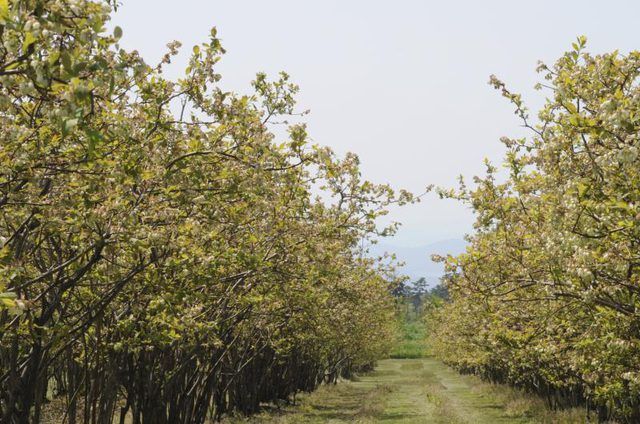Bulbs
Flower Basics
Flower Beds & Specialty Gardens
Flower Garden
Garden Furniture
Garden Gnomes
Garden Seeds
Garden Sheds
Garden Statues
Garden Tools & Supplies
Gardening Basics
Green & Organic
Groundcovers & Vines
Growing Annuals
Growing Basil
Growing Beans
Growing Berries
Growing Blueberries
Growing Cactus
Growing Corn
Growing Cotton
Growing Edibles
Growing Flowers
Growing Garlic
Growing Grapes
Growing Grass
Growing Herbs
Growing Jasmine
Growing Mint
Growing Mushrooms
Orchids
Growing Peanuts
Growing Perennials
Growing Plants
Growing Rosemary
Growing Roses
Growing Strawberries
Growing Sunflowers
Growing Thyme
Growing Tomatoes
Growing Tulips
Growing Vegetables
Herb Basics
Herb Garden
Indoor Growing
Landscaping Basics
Landscaping Patios
Landscaping Plants
Landscaping Shrubs
Landscaping Trees
Landscaping Walks & Pathways
Lawn Basics
Lawn Maintenance
Lawn Mowers
Lawn Ornaments
Lawn Planting
Lawn Tools
Outdoor Growing
Overall Landscape Planning
Pests, Weeds & Problems
Plant Basics
Rock Garden
Rose Garden
Shrubs
Soil
Specialty Gardens
Trees
Vegetable Garden
Yard Maintenance
Japanese Blueberry Tree Disease
Japanese Blueberry Tree Disease. The Japanese blueberry (Elaeocarpus decipens) is a compact evergreen tree that bears white flowers in spring, ornamental, blue fruits and deep-green leaves that occasionally turn brilliant red before dropping to the ground. Hardy in U.S. Department of Agriculture plant hardiness zones 8b through 10b, this tree...

The Japanese blueberry (Elaeocarpus decipens) is a compact evergreen tree that bears white flowers in spring, ornamental, blue fruits and deep-green leaves that occasionally turn brilliant red before dropping to the ground. Hardy in U.S. Department of Agriculture plant hardiness zones 8b through 10b, this tree suffers from very few diseases. One notable exception is sooty mold, a fungal disease that results from insects. Treating those insects is necessary to keep the tree healthy.
Identifying the Problem
Sooty mold fungi thrive on honeydew, the sticky, sweet excrement of various sap-sucking insects, including the soft scales that feed on the Japanese blueberry tree. Soft scales typically reach about 1/4 inch in length and have waxy, cottony or smooth body surfaces. The insects often look like little bumps on a tree. That is because the wingless scales find one feeding spot and settle there for life. Honeydew has a very high sugar content so attracts sweet-toothed ants.
Sooty mold fungal spores grow and spread over leaf surfaces, making foliage look as if it is coated with a velvety or crusty layer of black soot. Sooty mold doesn't actually invade plant tissue but can cause indirect damage. After the mold coats a tree's leaf surfaces, the tree doesn't receive enough sunlight to undergo photosynthesis. As a result, the tree suffers reduced vigor and stunted growth, and its affected leaves turn yellow and drop.
Controlling Scale Insects
Horticultural oil spray controls scales when applied just after the young scale crawlers emerge in late spring to early summer. As a bonus, the oil solution can make the sooty mold fungi slough off the affected tree's leaves. Take the guesswork out of mixing a solution by using a horticultural oil product in a ready-to-spray format. Following the instructions on the manufacturer's label, spray enough of the oil to penetrate the Japanese blueberry tree's canopy and cover the tops and undersides of its leaves thoroughly. Wait at least one month before giving the tree a second treatment if another treatment is necessary.
A horticultural oil spray shouldn't be used when rain, freezing weather, fog or a humidity level higher than 90 percent is expected within 24 hours of the treatment. Avoid applying the oil when the temperature rises above 90 degrees Fahrenheit, or else you risk burning your Japanese blueberry tree's foliage. Horticultural oil has a low toxicity to humans, animals and beneficial insects but can still irritate skin and eyes. Keep pets and people out of the treatment area until the oil solution dries. Wear protective gloves, other clothing that covers your skin and eye wear to reduce your risk of exposure to the oil.
Managing Ants
Ants often act as scale bodyguards, keeping the honeydew producers safe from beneficial insects. Trap the interfering ants by banding the Japanese blueberry tree's trunk with fabric covered with a commercial sticky substance. Trimming back nearby branches will force the ants to climb over the fabric band's sticky material to reach the blueberry tree's honeydew-covered leaves. Check the fabric band every seven to 14 days, wiping it clean and replacing it when necessary. Placing plastic ant bait stations containing a sugar-based bait also can reduce the ant population, but use bait stations only if curious pets and children won't be in the area.
After you get rid of the protective ants, the scale insects' natural enemies should move in and start feeding on the scales. Beneficial insects that feed on scales include lady beetles, parasitic wasps and lacewings. Entice more beneficial insects to the area by placing various flowering plants around your Japanese blueberry tree.
Removing Sooty Mold
Although sooty mold disease is caused by fungi, no need exists to attack your Japanese blueberry tree with fungicide. After you eliminate the underlying insect problem, scales, simply clean the sooty mold from the tree's foliage. Spraying a tree with a strong blast of water from a garden hose often removes the mold growth. If the sooty mold won't rinse off, then dip a soft cloth or brush into a solution containing 1 teaspoon of mild dish soap and 1 gallon of water, and test the solution on a small, hidden section of leaves. Use the wet cloth or brush to wipe sooty mold gently off only one section's leaves because a soap-water solution sometimes damages sensitive plant leaves. Allow the solution to remain on the test section's leaves at least seven days before checking the leaves for burns. If no damage occurred, then use the solution to clean off all sooty mold growth from your Japanese blueberry tree.